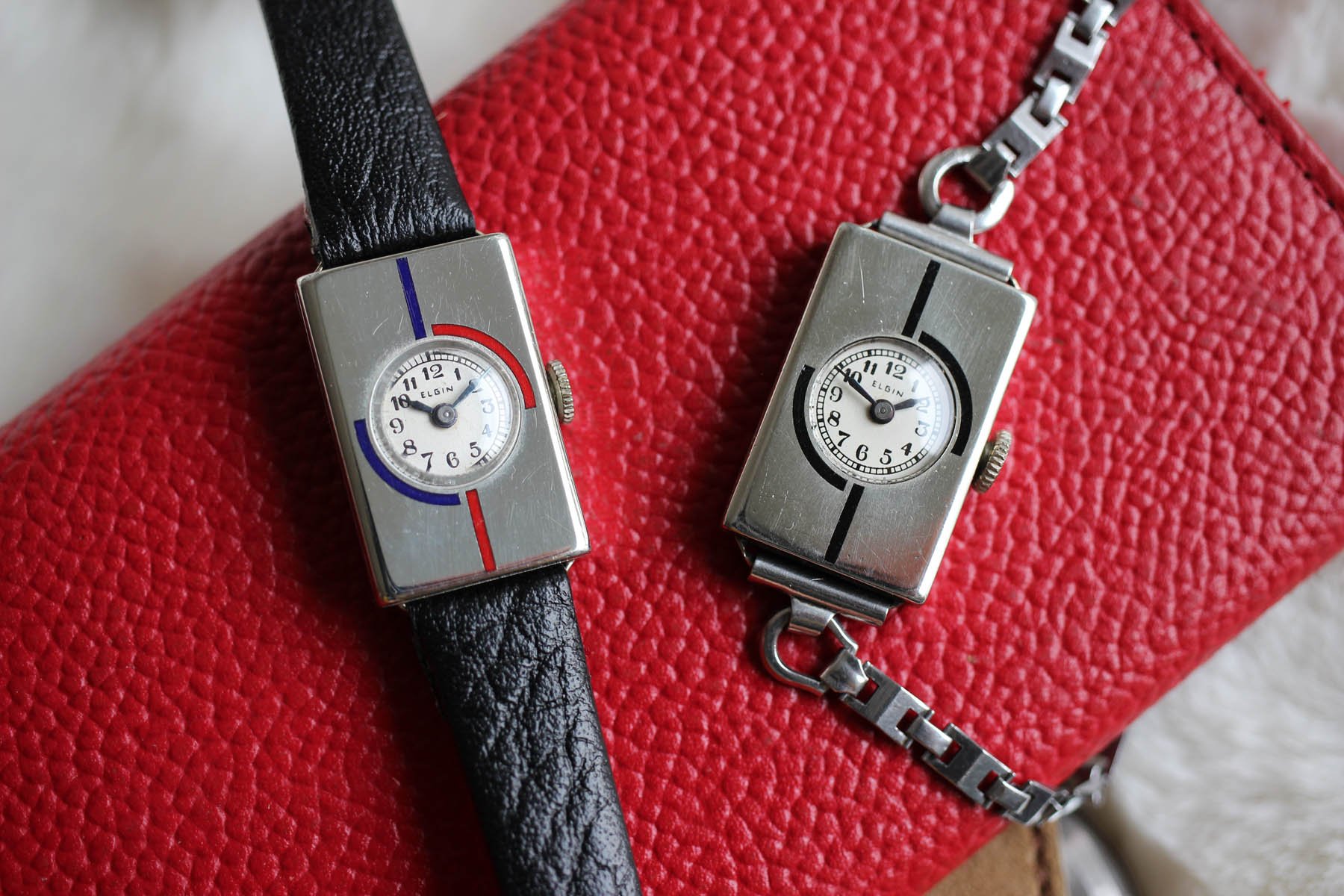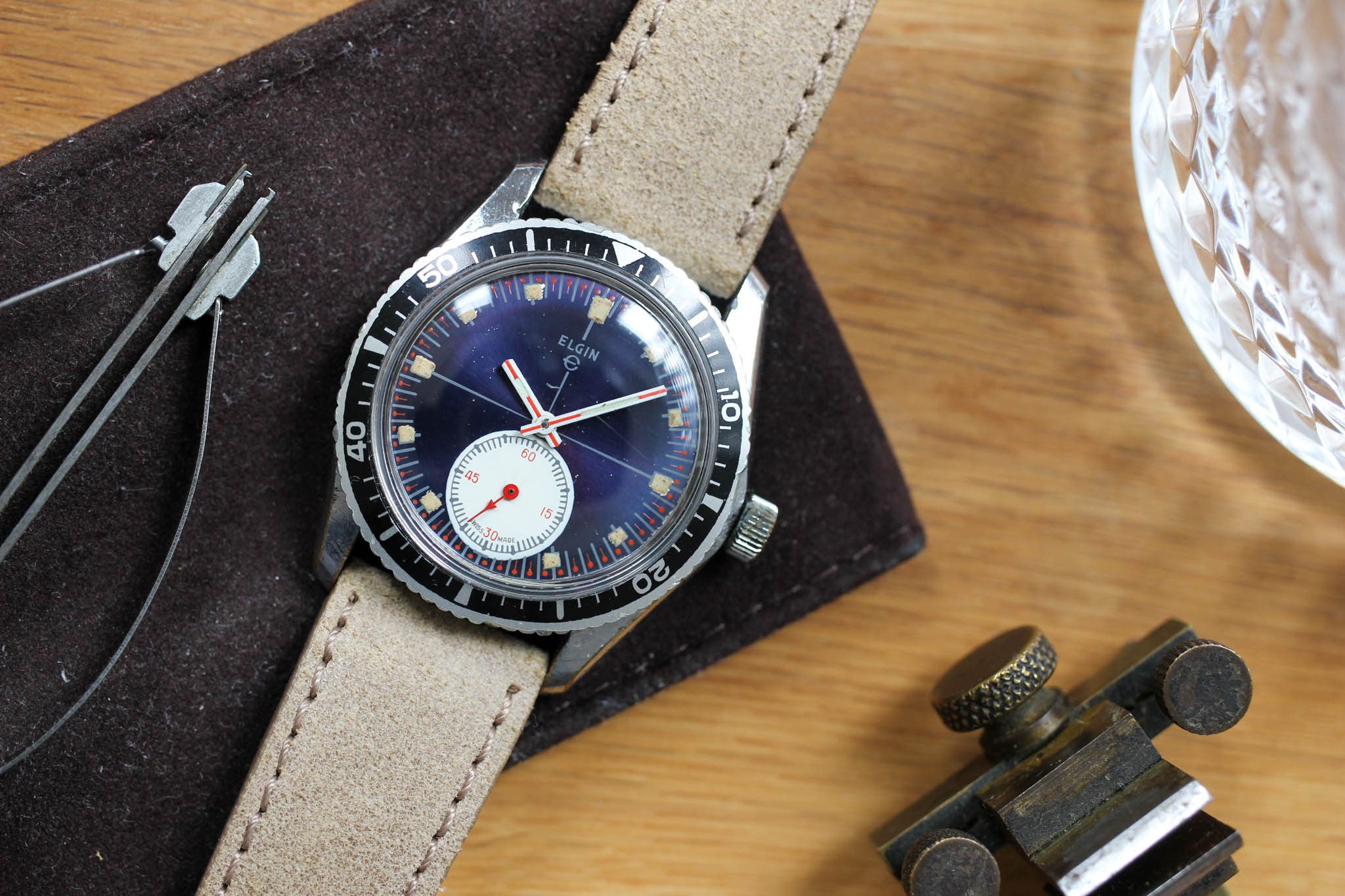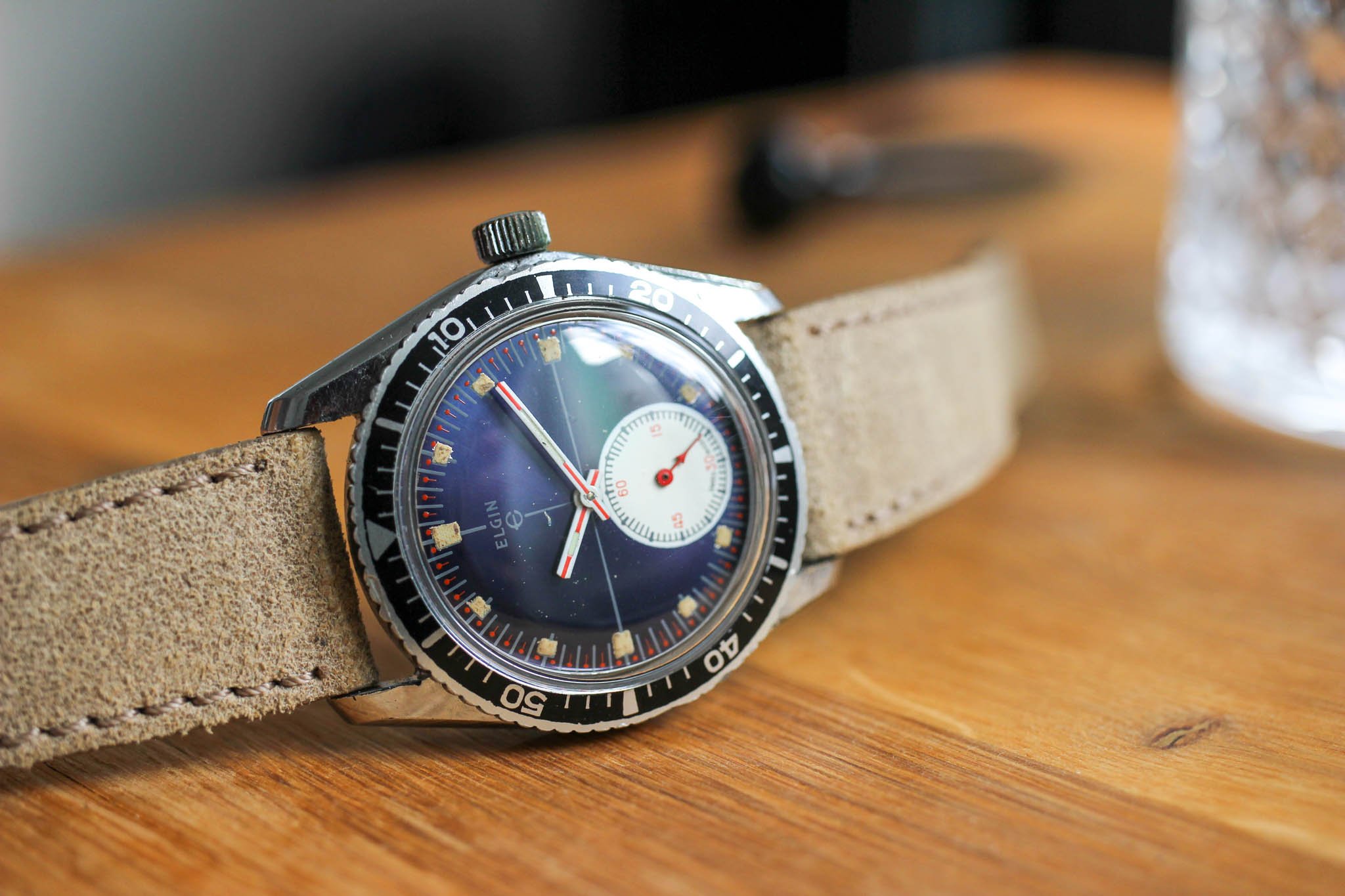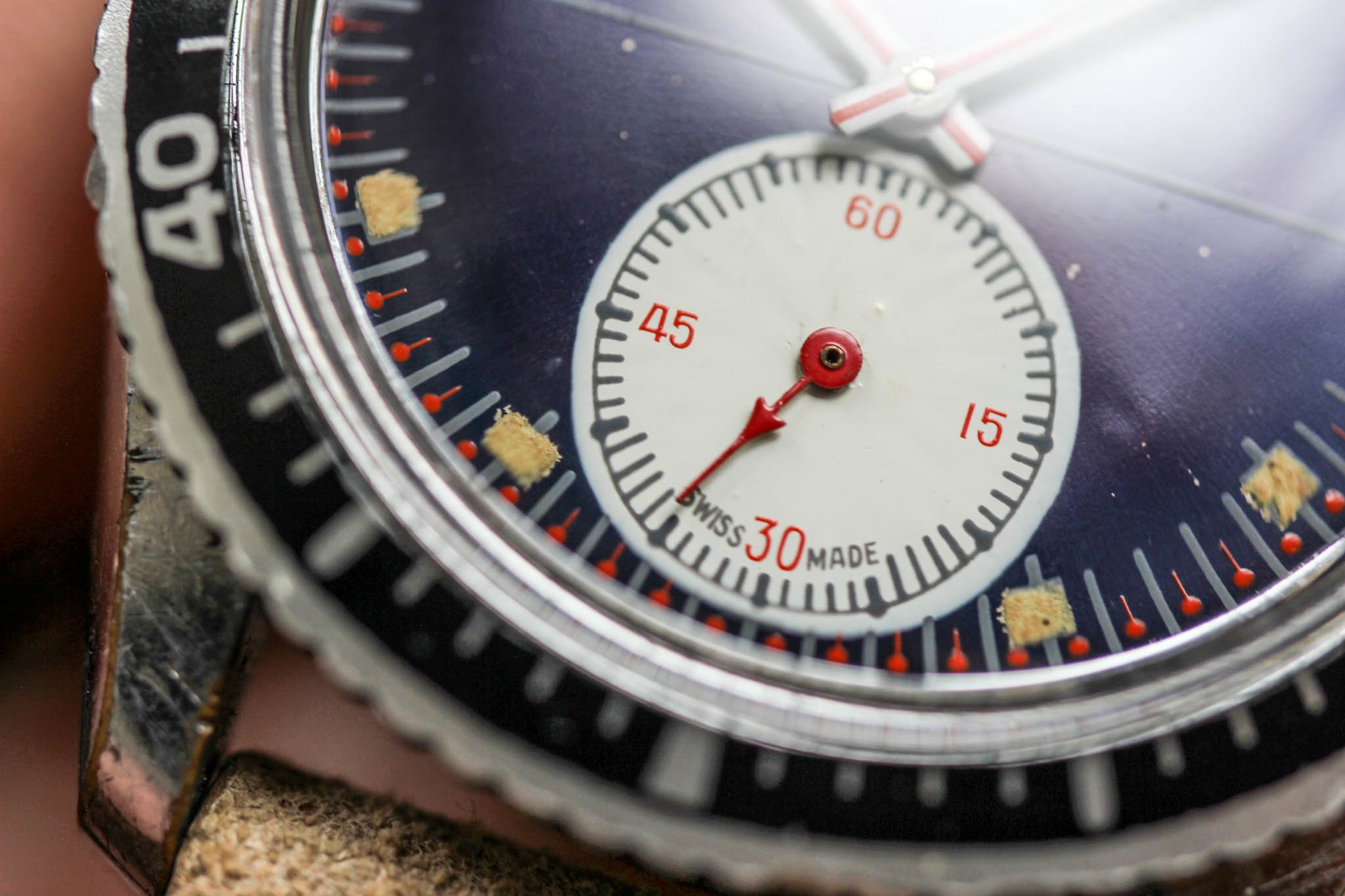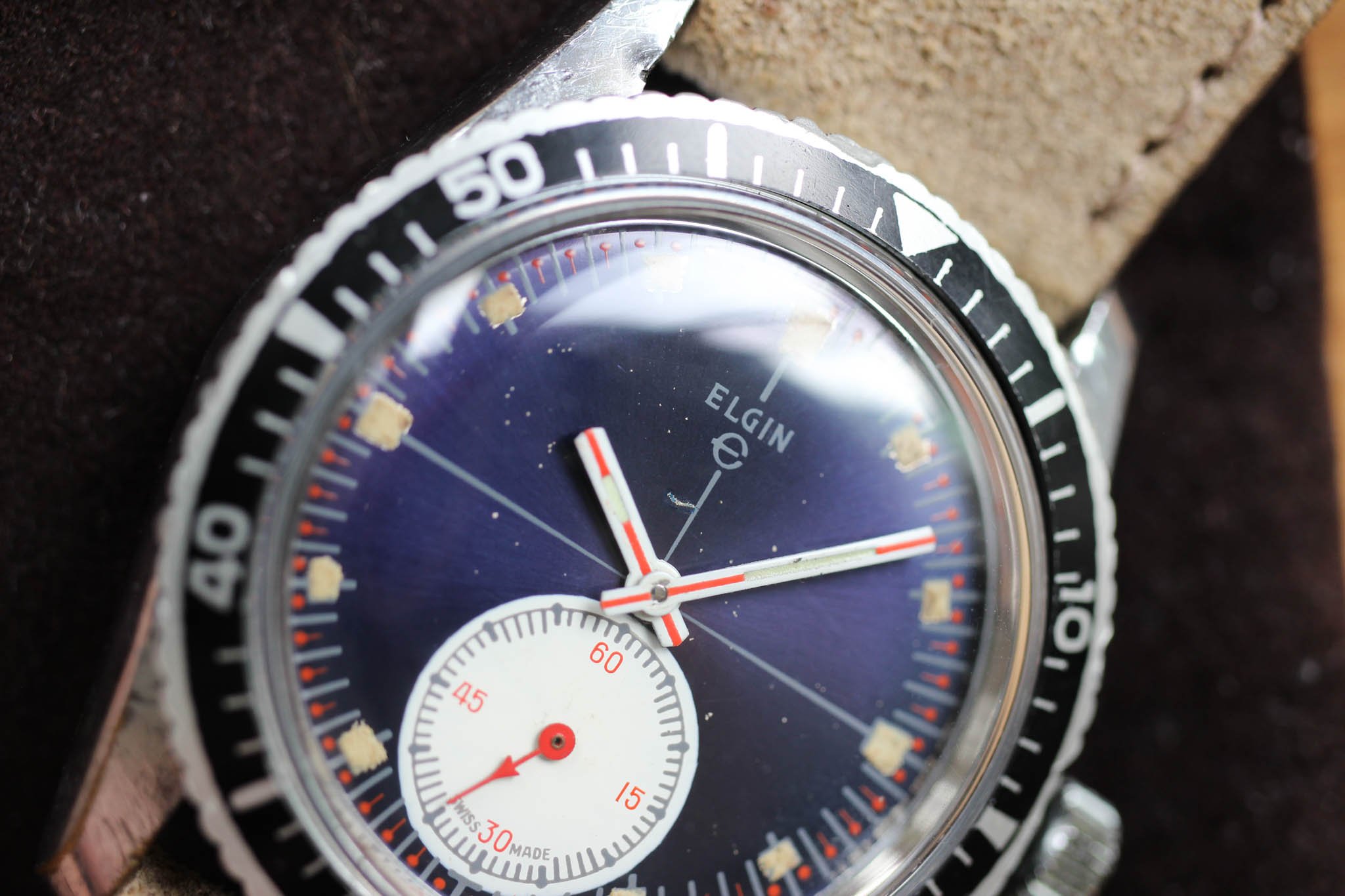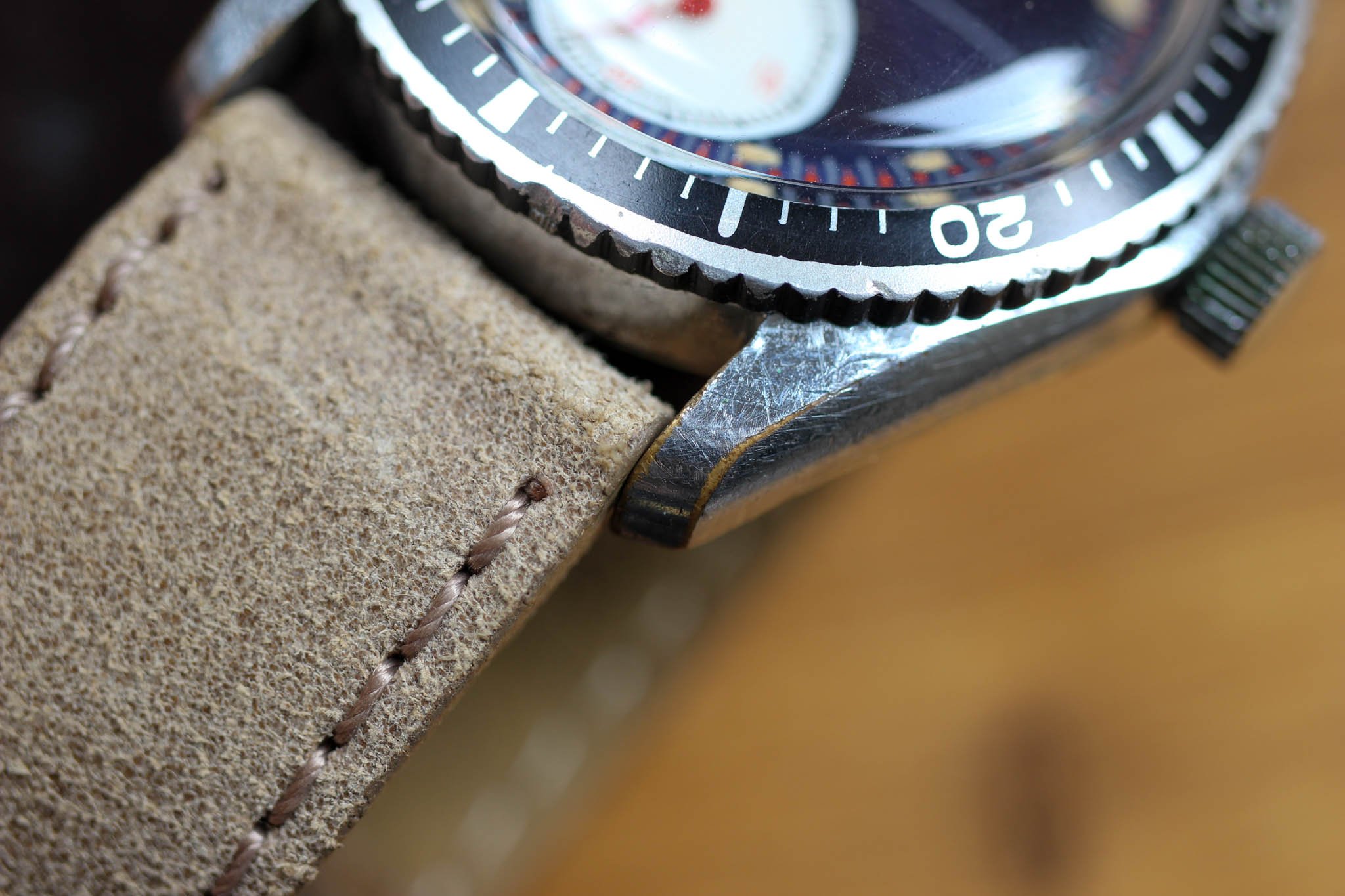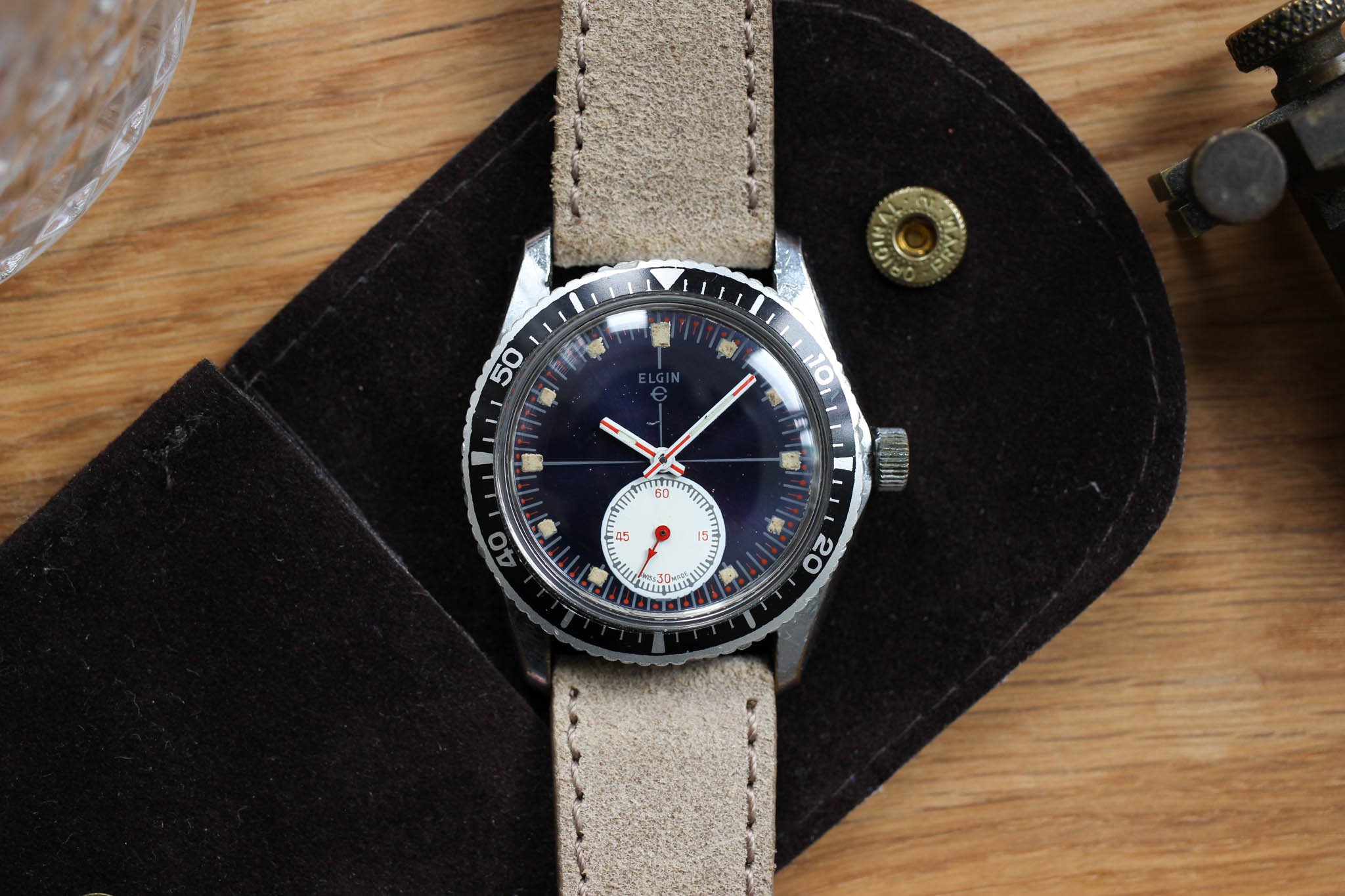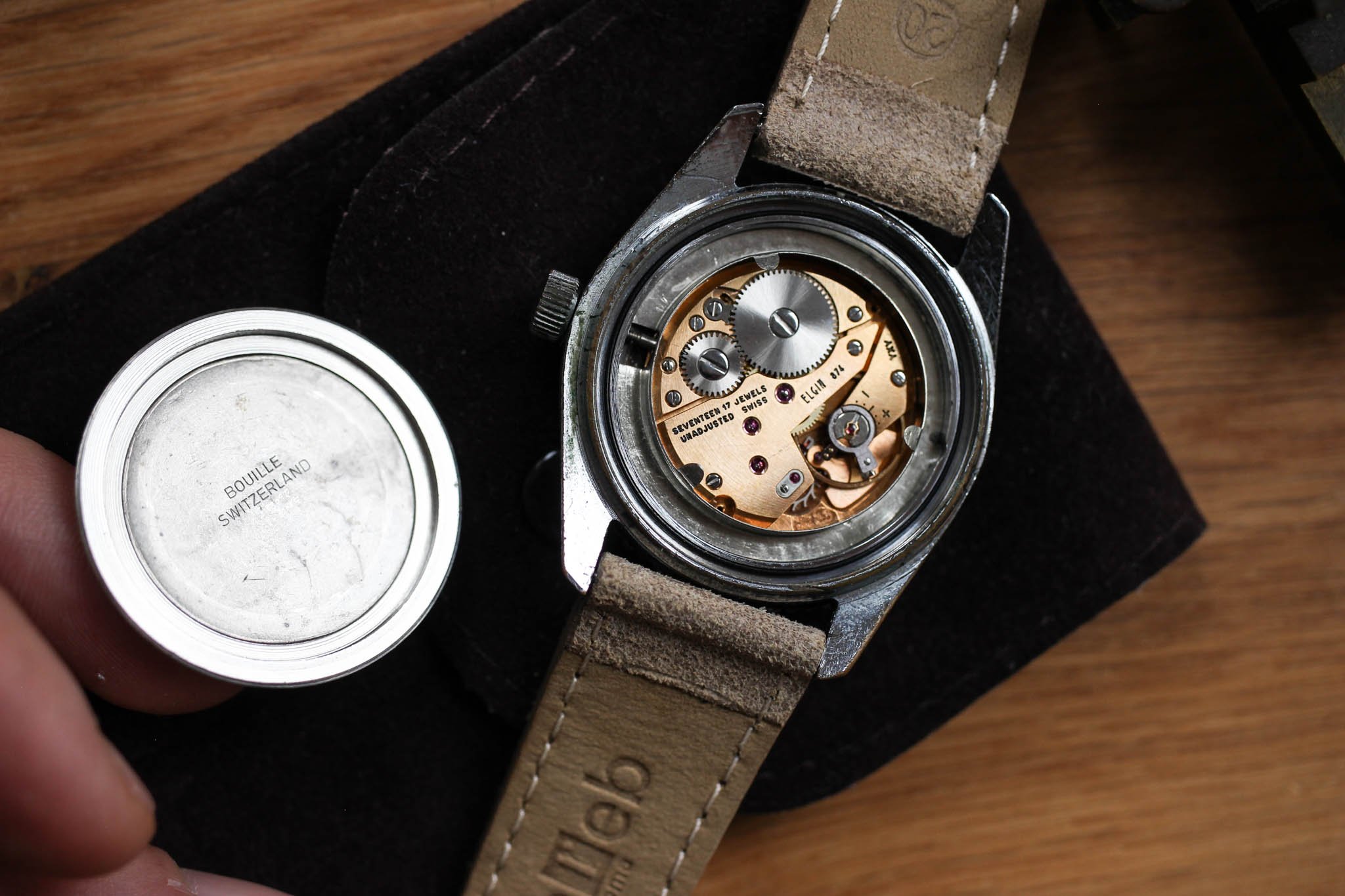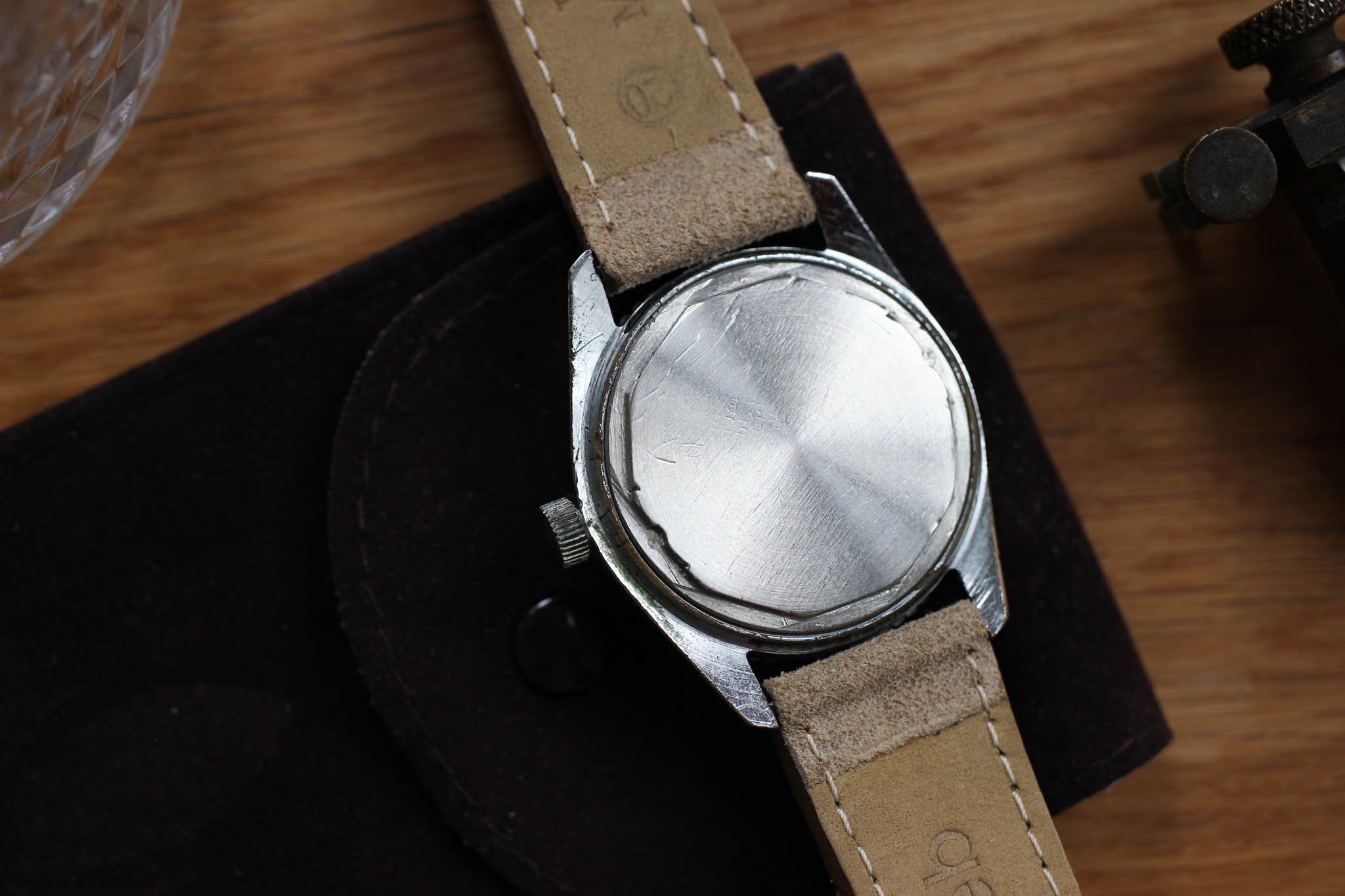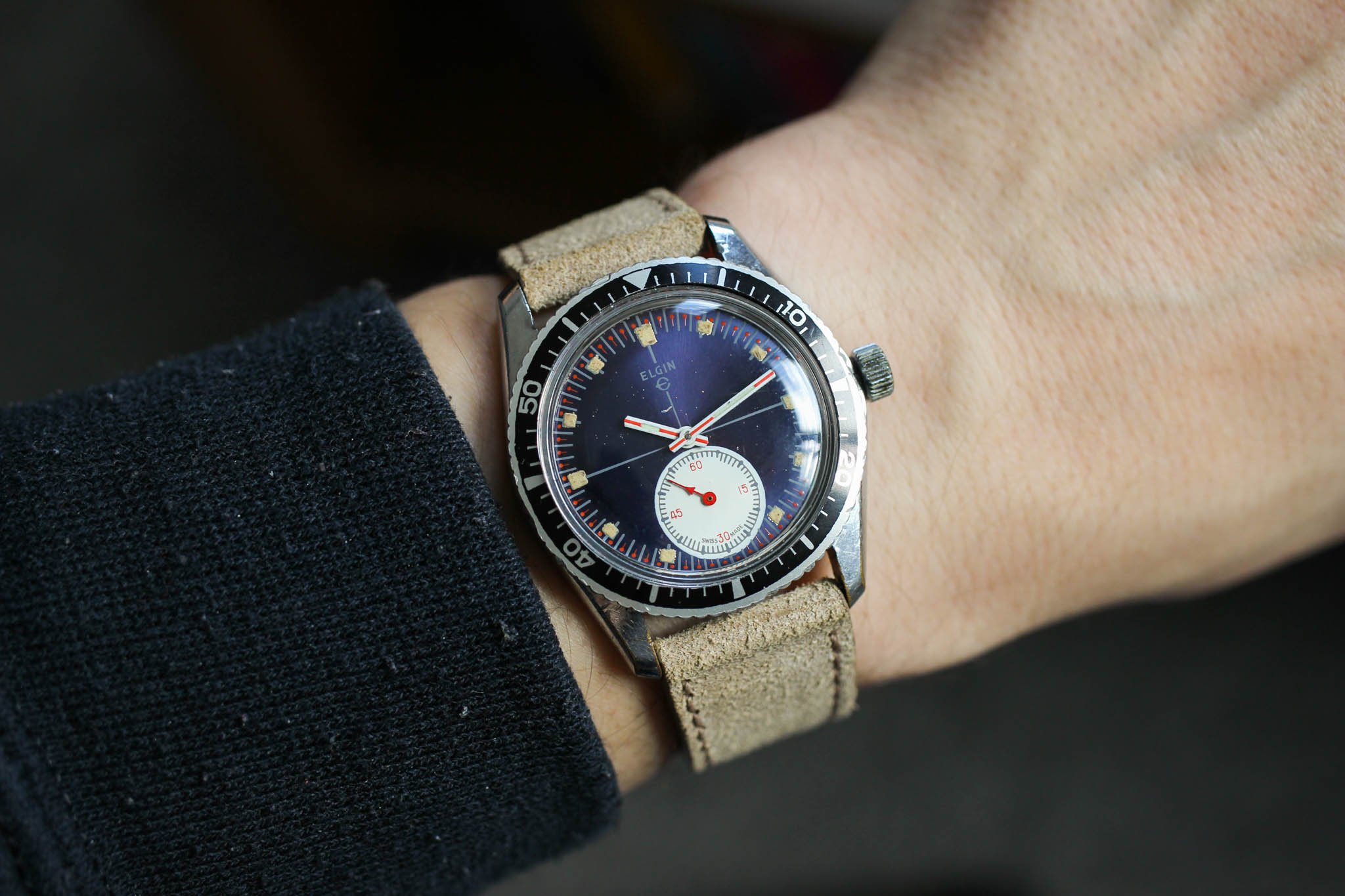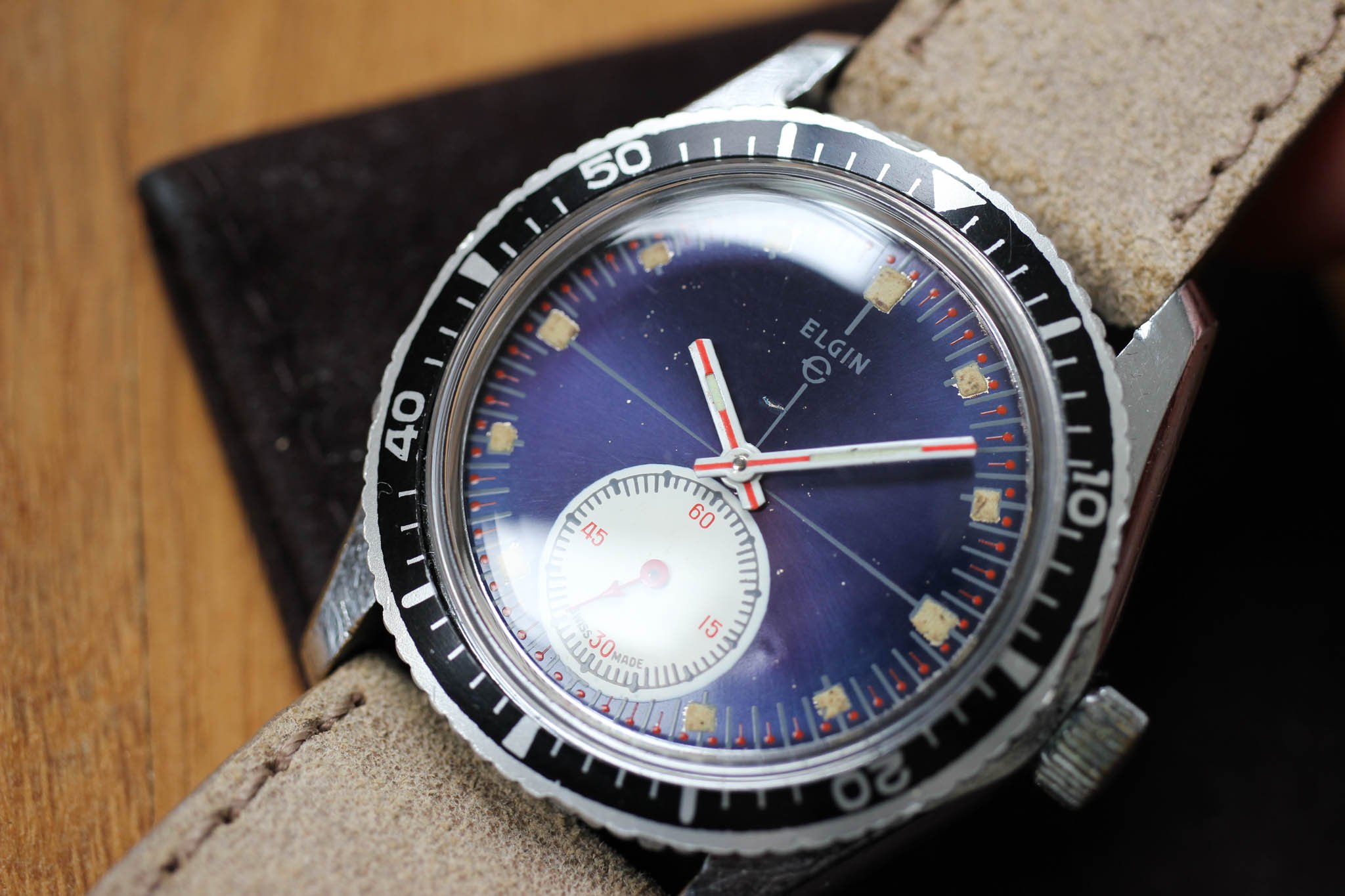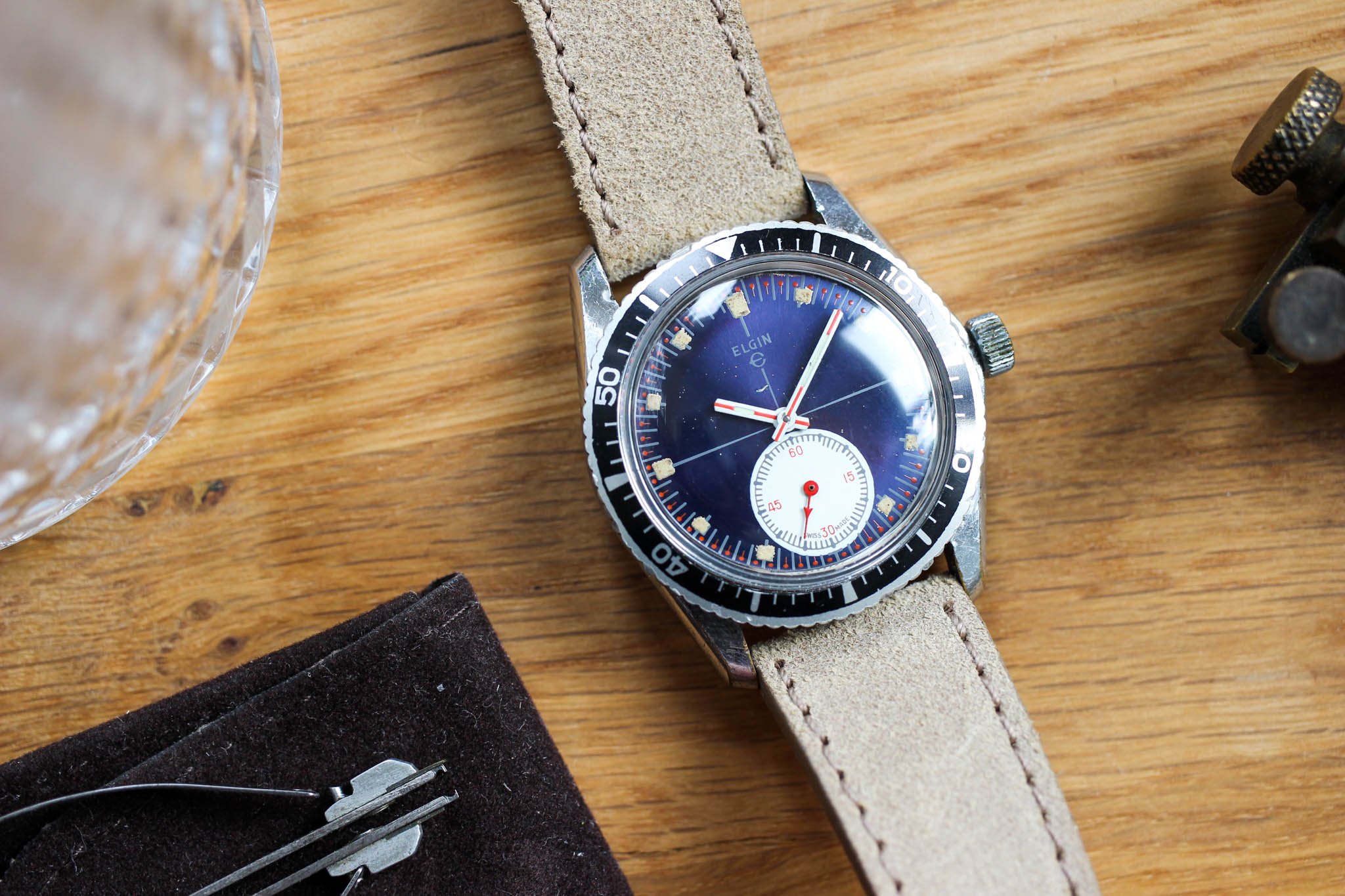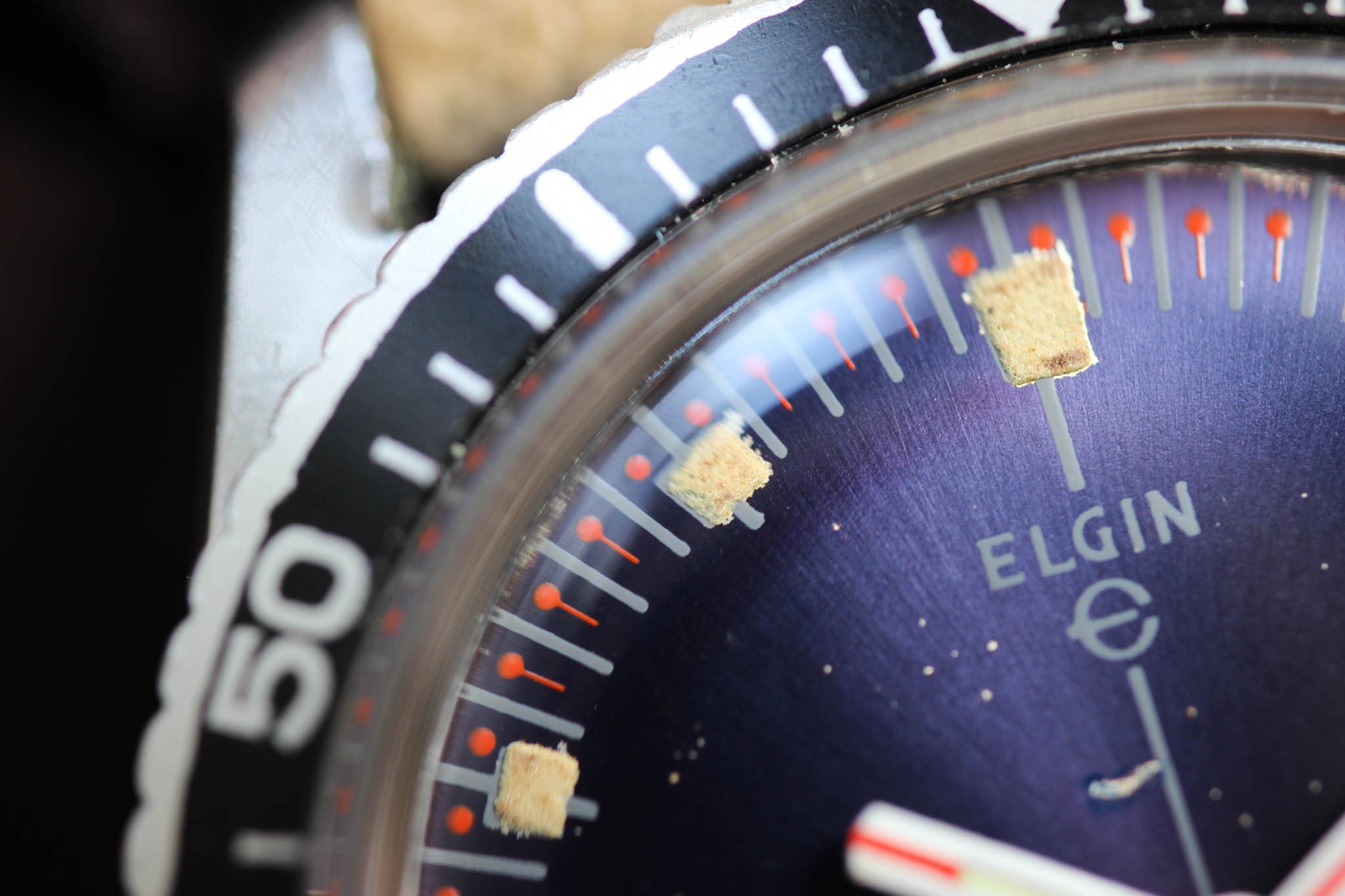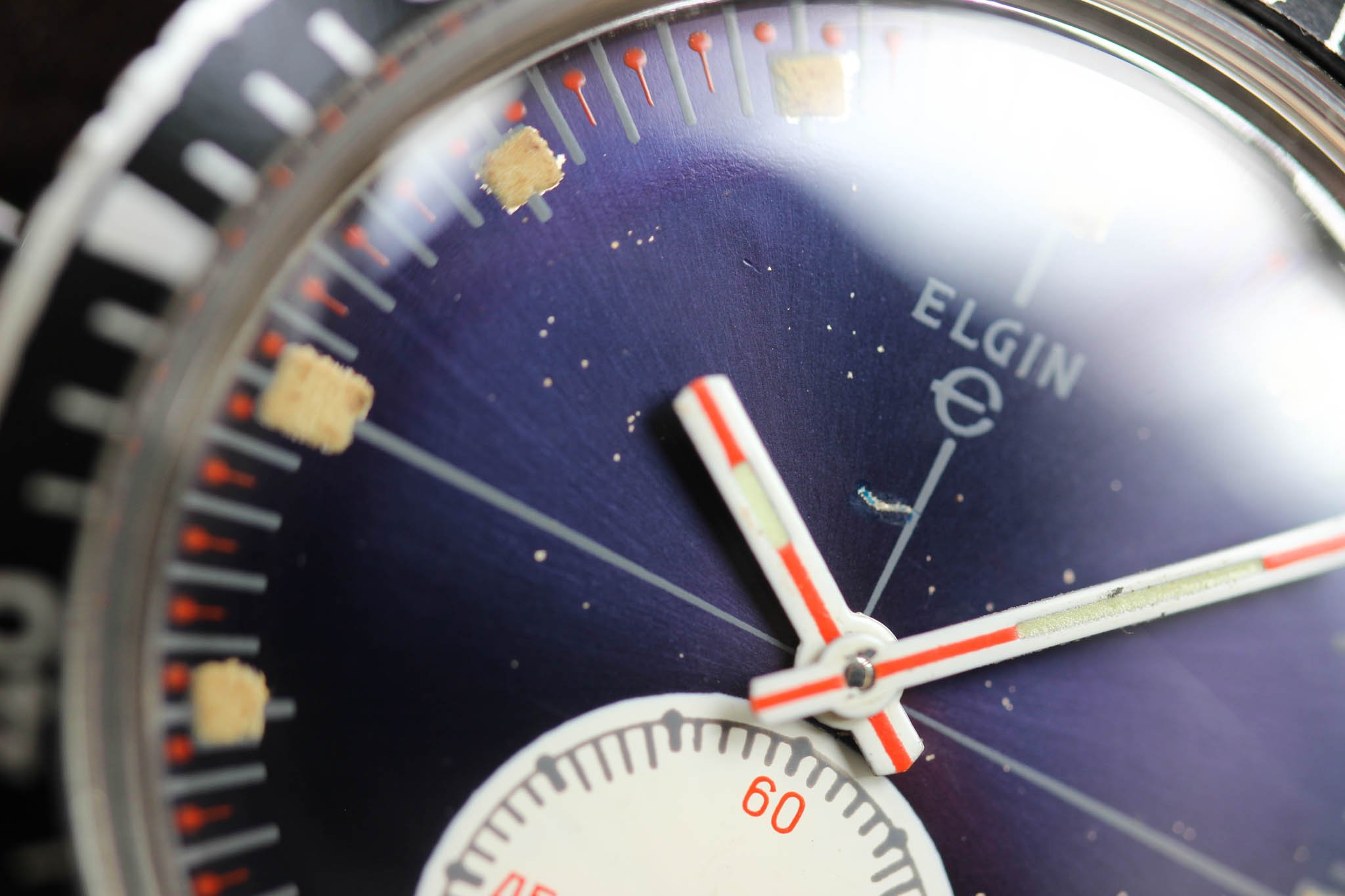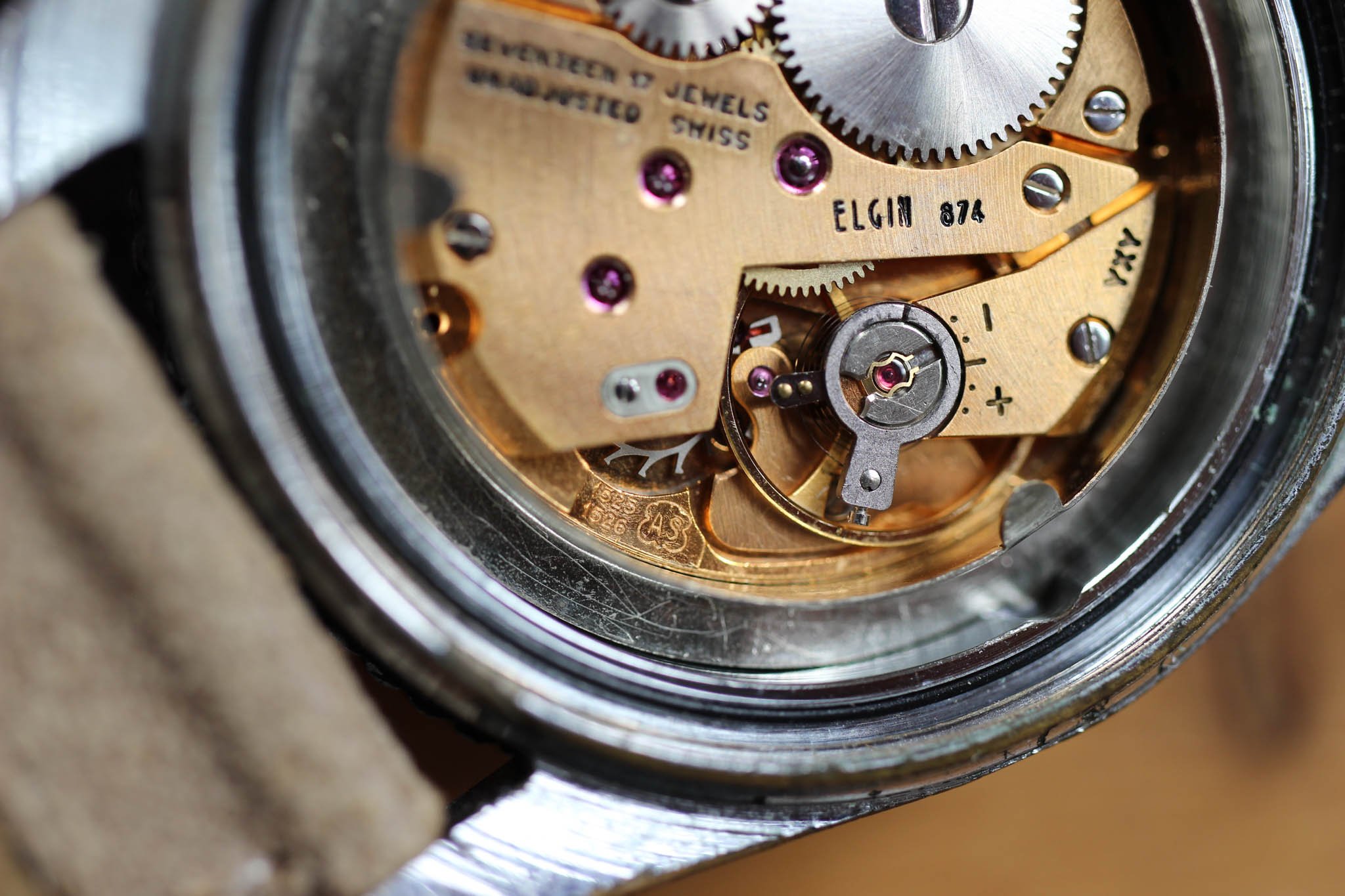#TBT The Most Captivating One-Eyed Elgin Diver’s Watch
I don’t remember many three-handers which have made me ooh and ah as much as this Elgin diver. It’s rich in details and colors, yet it’s still pretty elegant.
When I hear the name Elgin, I associate it with Waltham or Illinois watches. And I mostly think of pocket watches with beautiful dials. Anytime I visit my watchmaker, there is a new Elgin pocket watch laying around.
Elgin in your pocket
The original Elgin company, founded in 1864, was an old American watch manufacturer that closed down in 1968. During those 104 years, the company produced about 60 million watches. We haven’t covered Elgin much in the past, but the brand has many decent and interesting watches in its product history. For starters, you could kick off your Elgin research with the 1920s Elgin Parisienne designed by Monsieur Lucien Lelong.
“Elgin One-Eyed Bandit”
If I remember correctly, that was the name of this beautiful diver, as listed by the German dealer from whom I bought it maybe four or five years ago. It was quite an impulsive purchase. I was not searching for it, but once I saw it, I could not resist. At that time, I had no clue what a unique specimen it was. I have only seen three other examples in the last five years, with each one having worn and shown its age completely differently.
Very accurate nickname
One brief look is just about enough to understand the One-Eyed Bandit nickname. And what an eye it is! It’s not just a contrasting white register on a dark background. First of all, it’s really tall, as it spreads all over the bottom half of the dial from the central hands almost to the edge of the minute track.
This white sub-register has a really unusual texture. It looks like porcelain, but it’s not perfectly flat. In a way, it appears as if a can of white paint had spilled over the surface and then settled unevenly. A seconds track with a bolder index and dot distributed every five minutes is printed in an unconventional gray tone. The striking, charismatic sub-seconds hand is an absolute winner, with the longest arrow tip you’ve ever seen, guaranteed. Watching the sub-seconds is just about enough to blow your mind.
And that’s not all
We have only just begun. Every single detail about the dial is different. Dark blue in some lighting conditions and turning violet in others, this dial is a masterful piece of high-end watchmaking quality. Sixty thin light blue lines in the minute track hide small hair-thin red markers with an iconic Daytona shape. Notice the lumed square hour indices and distinct lines dividing the dial into three unusual sectors.
The white baton hands with a Dodge-Viper-style red stripe are fresh and perfectly legible. There is a lot of red detailing on the minute track, sub-register, and hands, but it’s not overdone. The overall design is sleek and sporty, and it’s definitely different from what you would expect from a 1960s watch.
Any drawbacks?
The 36mm case is perfectly sized for me, but collectors with big wrists might find it a bit small. If I was about to outline the real dealbreaker for many people, I could complain about the chrome-plated brass case. Yeah, such a beautiful watch deserves to be cased in steel, but let’s call a spade a spade.
Like with many other chrome-plated watches, it’s interesting to observe how differently their cases “surrender” after years on the wrist. I was lucky I guess, as the only signs of aging and brass-popping visible on my piece are around lugs. The level of wear suggests my watch was worn quite extensively and took some proper beating.
What’s interesting is that another example I’ve seen has way-more-solid lugs, but the chrome is completely eaten away from the backside of the case. I guess the previous owner of my watch did not sweat that much or wore his watch in a cooler environment. The case of the third example I saw had seen the chrome plating completely peeled off of the side. It almost looked like a brass watch.
Reflecting on the crown
Two other examples I studied for comparison here and here are completely identical to mine except for the hat-style crown. With a 2:1 score, one would assume my crown is wrong and possibly a later replacement. But honestly, I am still not sure. First of all, the hat-shaped crown looks completely off to me. Secondly, when investigated under a loupe, the level of wear on my crown is consistent with that of the case.
I decided to give researching it another try, and when I did, I found this example and this one as well. The verdict? Don’t rely only on what dealers say; do your own due diligence. This watch is a perfect example of how difficult it is to decide whether parts are factory-original or not. With poorly covered watches and only a handful of existing examples, the best you can do is make up your own mind.
Masochist or joker?
The case hides a movement signed Elgin 874, which is basically an AS 1525/1526. It’s nothing special, but it’s reliable and nicely colored when you get a chance to see it. The case back on my Elgin diver had a generous and unusual Elgin stamping, but some overzealous “specialist” ground it off. The brutal treatment and deep scars from the rasp can be seen around the raised edges where an opener would grip. The purist in me suggests it was handled by a masochist. At the same time, I am having fun imagining someone with a big file hovering over it and “fixing” the case back. We all should keep in mind that a collectible watch today used to be just a proper tool a few decades ago.
Last thoughts
If we forget the brass core, the shape of the case and style of the lugs are surprisingly up-to-date. I also forgot to mention the Elgin symbol on a dial, which is amusingly similar to the € symbol. The rotating bezel is the real deal. It gives the watch extra credit and a few additional (though imaginative) millimeters in diameter. I never put my Elgin diver on a bracelet or a rubber strap, as I think that natural leather perfectly underlines the bold temperament of this piece. Happy hunting!

